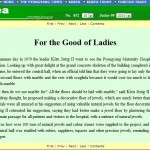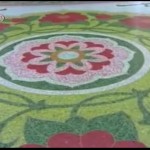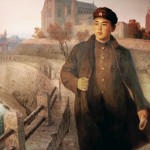Institute for Far Eastern Studies (IFES)
NK Brief No. 10-12-29
12/30/2010
In the New Year’s Joint Editorial issued last January, the North Korean government vowed to improve the lives of the people by focusing on light industry and agriculture. Early in December, the North Korean government-run media reflected on the year’s achievements, stating that advances in industry and improvements in the lives of the people had made unprecedented leaps in 2010.
As North Korea pushes forward with its attempt to “open the doors to a Strong and Prosperous Nation,” Pyongyang has poured significant effort into reviving its economy. In mid-December, the [North] Korean Central News Agency released a report on the 2010 activities of Kim Jong Il, noting that he had made 65 visits to sites related to the nation’s economy, more than twice as many as the 31 visits made to military sites. In 2009, Kim Jong Il made 58 visits to economic sites and 43 visits to military sites, suggesting that the leadership has shifted its focus to the economy this year.
On December 9, the Choson Sinbo published an article in which it highlighted the importance of improving the lives of the people and called an “economic renaissance” critical to the achievement of a “great and prosperous nation.” It also stressed the need for an independent people’s economy as the foundation for such a recovery.
As the North has worked to establish a self-sustaining economy this year, it has highlighted the Kimchaek Iron and Steel Complex as an example of ‘Juche’ production. North Korean media has highlighted the improvements in mining production, in Kimchaek as well as other areas, and has reported that the metals industry has undergone a “revolution” this year. The media has reported surprising production gains at the Hwanghae and Chollima steel complexes, and claim that these production levels have been repeated throughout the country.
Not only has the North celebrated “Juche steel”, but also “Juche textiles” and “Juche fertilizer.” In February, North Korea reopened the modernized “February 8 Vinalon Factory,” highlighting the factory as representative of the country’s independent textile production capacity and likening the new Vinalon factory to a new representation of North Korea’s socialist economy. On March 8, the KCNA called the Vinalon factory the new face of “the brilliant future of the Strong and Prosperous Nation.”
As for “Juche fertilizer,” the North’s media sang the praises of the Namhung Youth Chemical Complex, reporting that the anthracite gas process developed there allowed for steady agricultural production without needing to import fuel or other raw materials, and stated that if the process can be further institutionalized, it should be able to provide for the basic needs of the entire country.
Pyongyang has set as a goal the resolution of the country’s fertilizer shortage by producing one million tons of fertilizer by 2012 in the Hungnam Fertilizer Complex and the Namhung Youth Chemical Complex, stating that for every ton of fertilizer, it can produce ten tons of rice. The media has reported that the North will produce “over ten million tons of grain” in 2012 with the expected million tons of fertilizer.
Improvements in textiles, fertilizer, and other light industries are directly related to raising the standard of living for North Koreans. Kim Jong Il visited the Samilpo factory in Pyongyang in April, and for the rest of the year, state media heralded the advancements made in the factory and called for industries throughout the country to follow in its footsteps. Throughout the year, North Korean media highlighted numerous factories and light industries to illustrate the regime’s efforts at improving the standard of living.
The North Korean government has set a goal of resolving its food, clothing and housing shortages. In order to meet the food demands of the people, the regime seeks to increase grain output by boosting fertilizer production through ‘samilpo’-style factory enhancements. In order to assure everyone is clothed, the regime is relying on the Vinalon factory and increased domestic production. As for housing, the state has set its sights on the construction of 100,000 new houses by the year 2012.
At the forefront of the North’s push for modernization and increased production is its “Computer Numerical Control” (CNC), a vaguely defined idea that has been attributed to Kim Jong Un, the third son and probable successor of Kim Jong Il. As Pyongyang pursues a “strong and prosperous nation” by 2012, state-controlled think-tanks and industries are focusing on CNC as the means for modernization and increased productivity.




